As in Real Estate, Location Matters: Cellular Expression of Complement Varies Between Macular and Peripheral Regions of the Retina and Supporting Tissues
- PMID: 35784369
- PMCID: PMC9240314
- DOI: 10.3389/fimmu.2022.895519
As in Real Estate, Location Matters: Cellular Expression of Complement Varies Between Macular and Peripheral Regions of the Retina and Supporting Tissues
Abstract
The cellular events that dictate the initiation of the complement pathway in ocular degeneration, such as age-related macular degeneration (AMD), is poorly understood. Using gene expression analysis (single cell and bulk), mass spectrometry, and immunohistochemistry, we dissected the role of multiple retinal and choroidal cell types in determining the complement homeostasis. Our scRNA-seq data show that the cellular response to early AMD is more robust in the choroid, particularly in fibroblasts, pericytes and endothelial cells. In late AMD, complement changes were more prominent in the retina especially with the expression of the classical pathway initiators. Notably, we found a spatial preference for these differences. Overall, this study provides insights into the heterogeneity of cellular responses for complement expression and the cooperation of neighboring cells to complete the pathway in healthy and AMD eyes. Further, our findings provide new cellular targets for therapies directed at complement.
Keywords: RPE/choroid; age-related macular degeneration; complement; retina; single cell.
Copyright © 2022 Zauhar, Biber, Jabri, Kim, Hu, Kaplan, Pfaller, Schäfer, Enzmann, Schlötzer-Schrehardt, Straub, Hauck, Gamlin, McFerrin, Messinger, Strang, Curcio, Dana, Pauly, Grosche, Li and Stambolian.
Conflict of interest statement
CC is a consultant for Apellis. The remaining authors declare that the research was conducted in the absence of any commercial or financial relationships that could be constructed as a potential conflict of interest.
Figures

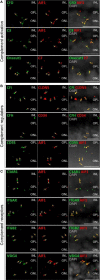
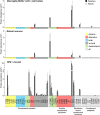
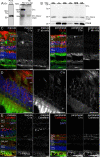
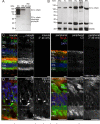

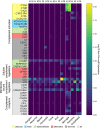
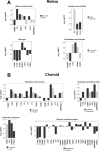

Similar articles
-
Single-cell transcriptomics of the human retinal pigment epithelium and choroid in health and macular degeneration.Proc Natl Acad Sci U S A. 2019 Nov 26;116(48):24100-24107. doi: 10.1073/pnas.1914143116. Epub 2019 Nov 11. Proc Natl Acad Sci U S A. 2019. PMID: 31712411 Free PMC article.
-
Elemental concentrations in Choroid-RPE and retina of human eyes with age-related macular degeneration.Exp Eye Res. 2019 Sep;186:107718. doi: 10.1016/j.exer.2019.107718. Epub 2019 Jul 1. Exp Eye Res. 2019. PMID: 31271759
-
Increased cell stiffness contributes to complement-mediated injury of choroidal endothelial cells in a monkey model of early age-related macular degeneration.J Pathol. 2022 Jul;257(3):314-326. doi: 10.1002/path.5892. Epub 2022 Apr 8. J Pathol. 2022. PMID: 35239183 Free PMC article.
-
Anaphylatoxin Signaling in Retinal Pigment and Choroidal Endothelial Cells: Characteristics and Relevance to Age-Related Macular Degeneration.Adv Exp Med Biol. 2018;1074:45-51. doi: 10.1007/978-3-319-75402-4_6. Adv Exp Med Biol. 2018. PMID: 29721926 Review.
-
Beyond the Complement Cascade: Insights into Systemic Immunosenescence and Inflammaging in Age-Related Macular Degeneration and Current Barriers to Treatment.Cells. 2023 Jun 23;12(13):1708. doi: 10.3390/cells12131708. Cells. 2023. PMID: 37443742 Free PMC article. Review.
Cited by
-
Ocular Localization of Complement Factor H and Its Association with Diseases in the Eye.Adv Exp Med Biol. 2025;1468:435-439. doi: 10.1007/978-3-031-76550-6_71. Adv Exp Med Biol. 2025. PMID: 39930234 Review.
-
Single-cell transcriptome reveals diversity of Müller cells with different metabolic-mitochondrial signatures in normal and degenerated macula.Front Neurosci. 2022 Dec 22;16:1079498. doi: 10.3389/fnins.2022.1079498. eCollection 2022. Front Neurosci. 2022. PMID: 36620436 Free PMC article.
-
Roles of MASP-1 and MASP-3 in the development of retinal degeneration in a murine model of dry age-related macular degeneration.Front Immunol. 2025 Mar 28;16:1566018. doi: 10.3389/fimmu.2025.1566018. eCollection 2025. Front Immunol. 2025. PMID: 40226626 Free PMC article.
-
Decreased complement 4 and interleukin-10 as biomarkers in aqueous humour for non-exudative age-related macular degeneration: a case control study.J Transl Med. 2025 Mar 12;23(1):317. doi: 10.1186/s12967-024-05909-x. J Transl Med. 2025. PMID: 40075380 Free PMC article.
-
Anaphylatoxin C5a receptor signaling induces mitochondrial fusion and sensitizes retinal pigment epithelial cells to oxidative stress.Biochim Biophys Acta Gen Subj. 2023 Aug;1867(8):130374. doi: 10.1016/j.bbagen.2023.130374. Epub 2023 May 13. Biochim Biophys Acta Gen Subj. 2023. PMID: 37187450 Free PMC article.
References
Publication types
MeSH terms
Substances
Grants and funding
LinkOut - more resources
Full Text Sources
Medical
Molecular Biology Databases
Research Materials

